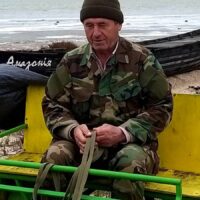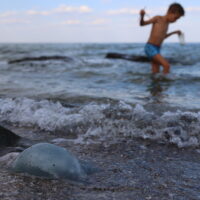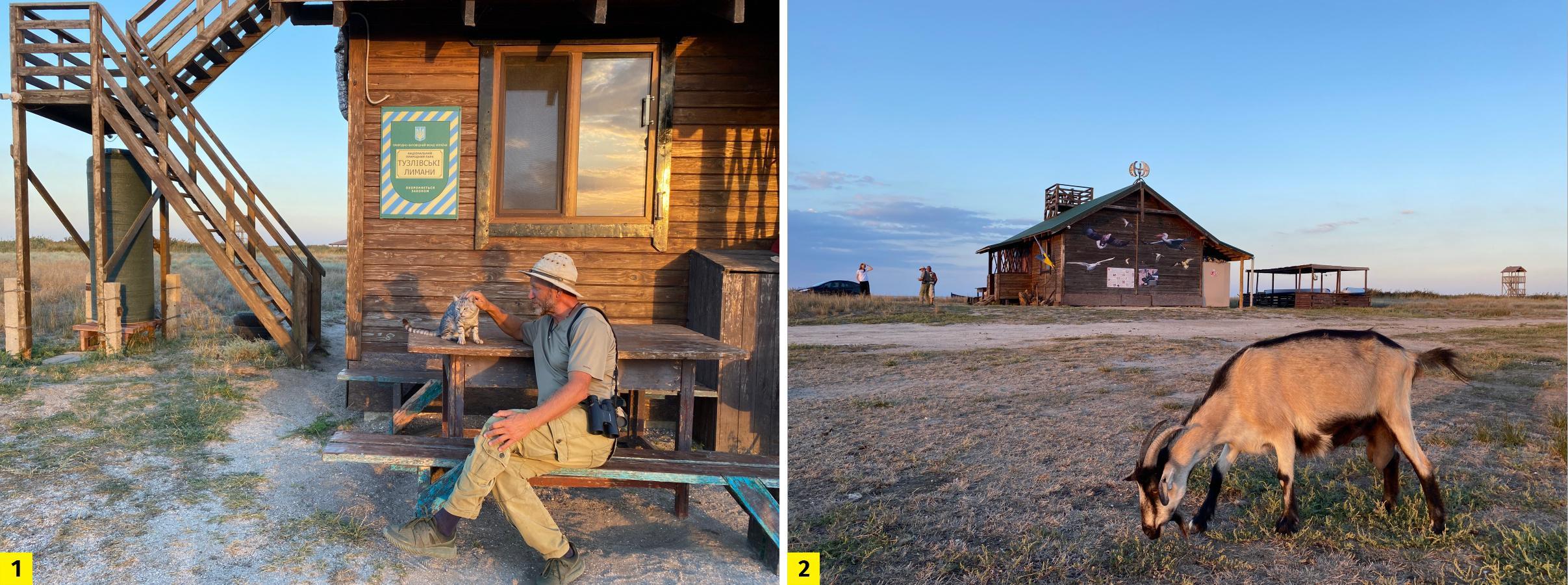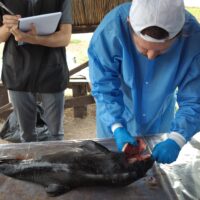Since March 2022, dead dolphins have been regularly found on the coasts of various Black Sea countries. Their bodies had been washed ashore before, but not in such numbers or with such injuries. This surge in deaths coincided in time with the active hostilities on the Russian side.
In November 2022, during the G20 summit, Volodymyr Zelenskyy said that 50,000 dolphins had been killed in the Black Sea as a result of Russian aggression, a fifth of the entire population. Their deaths will affect the entire marine ecosystem.
Russian propaganda worked with lightning speed. Considering the appearance of dead dolphins in Crimea, local environmentalists could not ignore it. Without any evidence, they claimed that it was the result of an “infection” that would “be over sooner or later”. And closed the topic.
NGL.media talked to scientists from various Black Sea countries and found patterns that confirm the direct involvement of Russians in the mass death of dolphins. We also systematized all documented cases of finding dead dolphins on an interactive map.
An unusual find
March 27, 2022. Ivan Rusev, Doctor of Biological Sciences, head of the scientific department of the Tuzly Lagoons Nature Park in Odesa Oblast, received an unusual photo in the messenger.
While on duty on the Black Sea coast, inspector Ivan Plachkov found a dead dolphin. Animals have been found before, but in 90% of cases they had traces of poachers’ nets. This one was unharmed.

The first dead dolphin found on the territory of the Tuzly Lagoons Nature Park in March 2022 (photo by Ivan Plachkov)
“It’s fresh, with no signs of nets or cut-off fins. I knew right away that something was wrong,” Rusev recalls.
A few weeks later, Plachkov was mobilized. Two months later, he would go missing while performing a combat mission near Bakhmut.
…We met biologist Ivan Rusev in early September 2023. Since the beginning of the full-scale invasion, this is the first official visit of journalists to the territory of the Tuzly Lagoons, the largest national nature park in Europe.
Rusev is 63 years old and has been living in Odesa his entire life. But since 2015, he has been working in the park and mostly lives here, 150 kilometers from the regional center.
For the past few years, he has been living in shifts at an observation post on the shore of the estuary. The nearest settlement is 40 km away. Food and drinking water are brought here when the shift arrives. The house has two rooms and a tiny kitchen, a summer shower and a portable toilet outside. In one room, scientists have set up an exhibition with photos and facts about the national park. The other is a modest bedroom: there are two beds and a computer desk under the wall, and the window offers a magnificent view of the estuary.
Before he moved, Rusev was a local star, or as he was also called, “the ecologist with whom it is impossible to make a bargain”. He used to work at the Department of Applied Ecology at Odesa State Environmental University.
Rusev suggests we have some tea, and we are talking at the table in the courtyard of the observation post. His skin is dark, almost brown, from constant exposure to the sun, but when asked if monitoring the sea is tiring, he answers confidently: “I’ve been studying Dnister for more than 20 years, and I thought I couldn’t live without it. Then I moved here and realized that the sea is my love for the rest of my life.”

A park worker transports the body of a found dolphin in a trailer pulled by a donkey (photo by Ivan Rusev)
Several goats and a cat named Sphinx approach him one by one. In addition to them, the scientists also keep a donkey. It was the donkey that helped pull the carcasses of large dolphins from the shore.
Two years before the outbreak of the Great War, experts from all Black Sea countries (except Russia) counted about 250,000 dolphins of three species. According to Rusev, about 50 thousand dolphins died in the Black Sea because of the war. He was the first to name these losses, and this is what attracted the attention of the world press to this topic. At the same time, it raised a lot of questions about how this calculation became possible. So, the main question I came to him with was how he did it.
“The corpses that wash up on the shore do not show the real mortality of animals. Some of them stay at the bottom, their lungs fill with water and they drown. Another part washes ashore, but is soon taken away by the waves. My colleagues from different countries, including the United States, conducted studies, [that] show that only 6-8% of the corpses are washed ashore. We counted the dolphins found on the coast in 2022 and came up with a figure of 50,000”, explains Ivan Rusev.
These losses are confirmed by a group of Ukrainian and Polish scientists. “In the three months since February 2022, between 37500 and 48000 cetaceans have died,” they state in the article in the prestigious British scientific journal Biology Letters, published in the spring of 2023.
The authors clarify: the results of their work are an example of the social scienceSocial science is a broad group of scientific disciplines whose subject is society – both the system as a whole and its individual parts, functions, and elements and may not be as precise as traditional scientific approaches, but they do reflect the trends. In addition, this study analyzes the current situation, while the conclusions of scientists reasonably take years to process.
“We are considering many scenarios that are related to the hostilities in one way or the other”
If we had to choose one person in Ukraine who knows the most about the situation with dolphins, it would definitely be Pavlo Goldin.
Goldin has been studying cetaceans for over 25 years. Before the occupation, he lived and worked in Crimea, then moved to Chernivtsi. His father worked as a biologist and a lecturer at the Simferopol Medical and Agricultural Universities, researching, among other things, the relationship between microalgae and dolphins. So his interest in marine life is not accidental.
After two months of emails and phone calls, we meet Pavlo Goldin in a coffee shop in Chernivtsi. He works both at the I.I. Schmalhausen Institute of Zoology in Kyiv and the Ukrainian Scientific Center for Marine Ecology in Odesa, so it was not easy to plan a meeting.
The researcher comments on the situation with restraint and approaches every figure and detail with the meticulousness of a scientist. He reminds us that the final word should be given to the specialists who are currently analyzing the stranded bodies of marine mammals. He refuses to name the number of dead animals, believing that it is more important to find out “why” than “how many”.
“In Ukraine, only I and my students are now engaged in research on cetacean strandings. We also collect data from Crimea and monitor social media. In addition, we get a major part of information from Odesa oblast. We take only those cases that are supported by authentic photos; we consider posts without photos to be false”, the scientist explains.
Goldin identifies several hypotheses for the increased mortality of dolphins:
Acoustic exposure and blast injury – i.e., the effects of radar, mine blast injury, stress, and injuries caused by missile launches (as the Russians launch cruise missiles from submarines). These consequences will last for years – like massive concussion in people, for example.
Intoxication – poisoning by substances, including ammunition, fuel, or rocket fuel components.
Stress – the effects of exposure to atypical underwater noise. Russian ships and explosions from them scare away fish (dolphins’ food source) and cause their migration. Then cetaceans have to migrate after them and lose their usual habitats.
Infection – caused by a single pathogen or combined, when several pathogens act simultaneously. They can get into the water, in particular, as a result of hostilities, for example, due to the destruction of sewer networks.
“We are considering many scenarios and, as you can see, they are somehow related to the hostilities. This is what we, as scientists, are trying to convey to the world community: War causes irreparable damage to nature,” the scientist concludes.
Talking to NGL.media, Pavlo Goldin does not hide his irritation when asked why the tests are taking so long. He has to hear it from people often, mostly with one hope: to get evidence of the Russian military’s involvement as soon as possible. After a pause, he explains with an example: “The intoxication hypothesis requires standardized samples of various substances and laboratories that can perform these tests. Both the first and second are not easy to find”.
Prosecutor’s Office investigates ecocide case
Pavlo Goldin is also assisting the Odesa Regional Prosecutor’s Office in investigating a criminal case of ecocide resulting from Russia’s armed aggression against Ukraine.

Due to the mass death of marine mammals on the beaches of Odesa region, the regional prosecutor’s office has opened a criminal investigation into ecocide (photo by Roman Baluk)
Law enforcement officers opened the case in the summer of 2022, at the same time as parallels were drawn to the large-scale ecocide in the Persian Gulf, when the Iraqi military blew up Kuwaiti oil wellsAs a result of the explosion of oil wells, severe fires broke out, which took 8 months to extinguish; the land lost its productivity, and an oil film of several kilometers in area formed on the water in 1991. This was the first example of an aggressor being punished for environmental damage. The UN Compensation Commission considered all claims for losses and damages caused to Kuwait as a result of the military invasion. Both people and organizations affected by the actions of the Iraqi army could receive payments.
The prosecutor’s office immediately invited Goldin to conduct a necropsy on the animals. Within over a year, he conducted nine necropsies, finding many pathological signs, and took more than 100 samples for analysis. These samples were sent for further research at the
University of Padua (Italy), and a separate study of the structures of the mammalian inner ear at the University of Hannover (Germany).
“I must say right away that all our colleagues agreed not to announce the results of the research until the full cycle of work is completed. This cannot be done quickly, but our priority is the completeness of the data. We will go to the press the moment everything is ready,” explains Goldin.
He believes that the stronger the evidence base, the more likely it is that the court will recognize the dolphins’ deaths as ecocide.
As of October 2023, 914 cases of dead and live cetaceans being stranded on the shores of Georgia, Turkey, Bulgaria, and Ukraine were detected in the Black Sea. Other details of the investigation are not disclosed.
Analyzes are carried out by the world’s best universities
One of Goldin’s students, Karina Vyshniakova, is also a Crimean. In February 2022, Karina left Odesa for a scientific seminar in Italy, and when the full-scale war broke out, her Italian colleagues offered her a job at the University of Padua. She accepted, not realizing that she was in the right place at the right time.
It is one of the oldest universities in the world and has perhaps the most powerful center for marine mammalian disease research. In a few weeks, dead dolphins will be found on the shores of the Black Sea, and thanks to Carina’s personal contacts, Italian scientists will agree to help analyze the animals found in Ukraine.
“But even after my colleagues’ consent, it was not easy. Our cetaceans are protected by the СІТЕС ConventionСІТЕС – the Convention on International Trade in Endangered Species of Wild Fauna and Flora, with 173 countries being parties to the Convention.. This means that we need to get permission to export the samples from Ukraine and to import them to another country”, Karina Vyshniakova explains to me with a smile during a Zoom call from Italy.
Since the scientists could not entrust this matter to delivery services, Karina herself volunteered to transport the frozen samples.
“I travelled by car from Chernivtsi through Romania. I had to explain to the border guards what I was carrying and why. And then I flew by plane from the airport in Suceava,” the biologist told NGL.media.
The scientists used Styrofoam boxes and cold storage batteries for the frozen samples. After transportation, the materials were transferred to a laboratory in Padua and sent to Germany. Although the first samples were taken in the summer of 2022, the results have not yet been published.
“You have to understand that some tests take months to complete. In addition, scientists may be involved in other projects, and there may even be queues in laboratories,” explains Vyshniakova. – “We don’t have the final result to include in the report yet, but we expect it by the end of the year. We need to be as meticulous as possible if we want to find scientific evidence of the war’s impact.”
Karina Vyshniakova and Pavlo Goldin are convinced that while waiting for the results, it is important to start working on a plan to restore the dolphin population after the war ends. The scientists’ recommendations include the creation of protected areas and the introduction of measures to reduce the mortality of animals in fishing nets. One option is acoustic deterrents, which are currently being tested in Bulgaria and Turkey.
The interactive map shows more than 2,000 dolphins found since 2017 (since detailed data for Ukraine is available). Each case shows the date of discovery, the species of dolphin and the exact location. Some of the points are accompanied by photos directly from the scene. Cases from 2022 are marked in white. You can zoom the map in and out. To see the details, hover the mouse over the mark.
What do marine biologists from other Black Sea countries say?
“In the first month of the war alone, [Turkish] scientists counted more than 80 dolphin deaths along the Turkish coast, which is an ‘extraordinary increase’. In normal times, there would have been only a few,” the Turkish marine research foundation TUDAV said in a response to NGL.media’s request.
“Last year, about 20 dead dolphins were found on the Bulgarian coast, most of the deaths were related to the sea current. At the same time, four cases that occurred near the Ropotamo River delta are related to military operations, due to nonspecific massive burns and skin lesions,” said biologist Atanas Rusev, head of the Bulgarian campaign “Save the Dolphins”
Romanian biologists confirm the observations of their colleagues. “Our team analyzed a total of 9 cetacean corpses between February 2022 and September 2023. We know both from the press and from the reports of our partners and co-authors that the number of cases during this period [on the Romanian coast] was about 170-180 heads”, Romanian marine biologist Razvan Popescu-Mircheni told NGL.media. – “Many of them had signs of fishing nets, but on several of them we registered burns and injuries that eventually caused death. Several of them arrived on the Romanian and Bulgarian coasts still alive, in agony. In five animals, we established direct cause-and-effect links to military activities in the Black Sea. These were dolphins with burns and those that could not navigate and eat, which led to a stage of malnutrition that was no longer compatible with life. Causes that can lead to an inability to navigate are related to very loud sounds at different frequencies, such as from explosions or military sonar.”
“Of course, noise pollution in the Black Sea has increased and this will have long-term effects on Black Sea cetaceans. This can be compared to the reaction of humans – we have some kind of stress that can cause the appearance of cancer cells in the body”, saidat NGL.media’s request, Tsira Gvasalia, environmental journalist and Cactus Media founder took a comment from professor Kopaliani Natia Kopaliani, professor at Ilia State University Institute ofEcology in Tbilisi, Georgia. – “Unfortunately, scientists from middle-income countries also face difficulties in collecting information due to the trivial weakness of the technical base, which hinders the investigation”.
Interactive map: Nazarii Tuziak
This text was produced with the support of Journalismfund Europe







